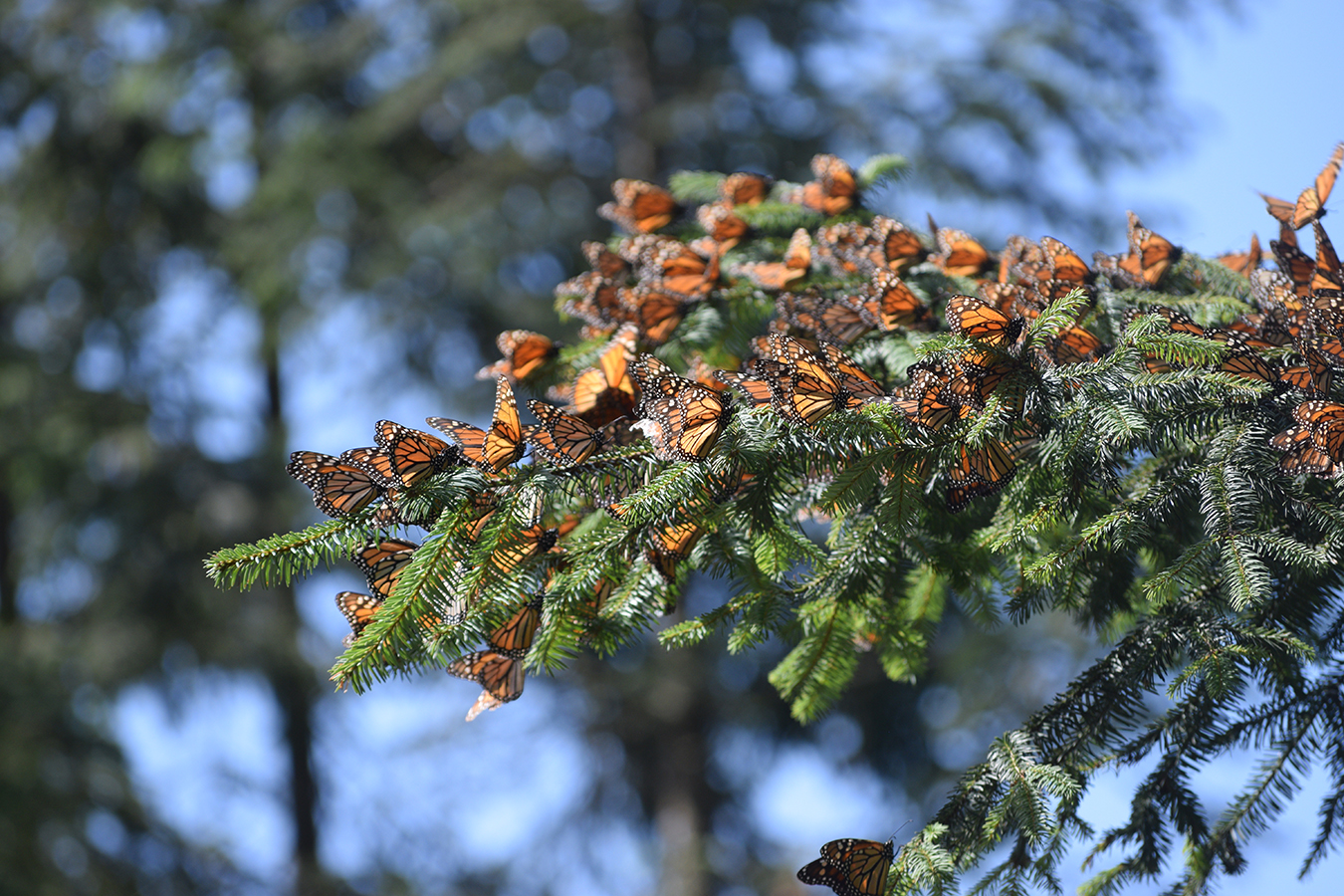A documented 74% decline in the California overwintering population since the late 1990s mirrors the steep decline, estimated at 80–90%, of the number of butterflies in Michoacán over the same period.
The number of monarch butterflies overwintering was down this winter in both coastal California and in Michoacán, Mexico, according to recent announcements by the Xerces Society’s Western Monarch Thanksgiving Count and World Wildlife Fund–Mexico.
In California, the Xerces Society’s Western Monarch Thanksgiving Count reported a total of 298,464 monarchs—a fraction of the 1.2 million reported in the late 1990s—and lower counts at key sites compared to last year, despite an increased volunteer monitoring effort. In Michoacán, World Wildlife Fund–Mexico reported that monarchs occupied just 2.91 hectares of oyamel fir forest compared with 4.01 hectares last year.
While the annual announcements of monarch numbers garner a lot of excitement and attention, insect populations, including monarch populations, are characterized by a high degree of variability from year to year, and it is important to examine yearly counts in the context of longer-term trends. A documented 74% decline in the California overwintering population since the late 1990s mirrors the steep decline, estimated at 80–90%, of the number of butterflies in Michoacán over the same period.
While last year’s numbers showed a modest uptick in monarch populations and gave hope that recovery efforts may be showing early signs of progress, this year’s low numbers are a timely reminder of the threats monarchs and other pollinator species continue to face—from pesticide use and habitat loss to climate change and disease—and the need for an all-hands-on-deck, sustained conservation effort to turn their fortunes around.





